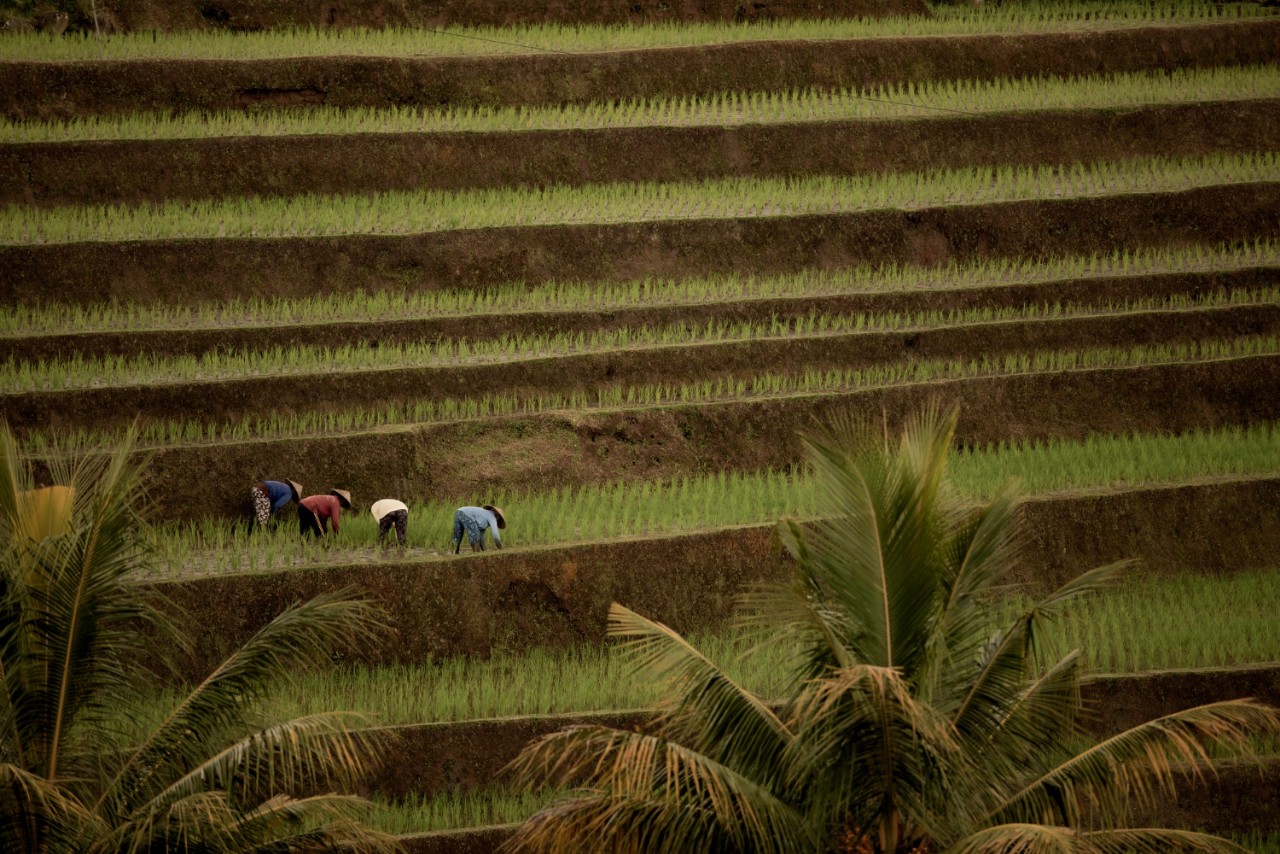Rice farmers serve as the main vanguard to ensure food security and sustain the agricultural economy, particularly in rice-producing countries like the Philippines. They are responsible for cultivating rice, a staple food for millions, and their productivity directly impacts both local and national economies.
Access to support programs such as loans and financial assistance is essential for rice farmers, as these resources help them manage production costs, recover from economic hardships, and invest in modern farming practices.
These programs are necessary not only for the farmers’ livelihoods but also for maintaining a stable food supply; without such support, farmers may struggle to sustain their operations, leading to negative consequences for food availability and economic stability. Understanding these dynamics is necessary, as neglecting the needs of rice farmers could result in increased poverty, food insecurity, and a decline in general agricultural productivity.
Types of Assistance Available to Filipino Rice Farmers
Agricultural programs designed to support farmers and fisherfolks can be classified into three primary categories: Financial Assistance Programs, Loan Programs, and Support and Development Programs. Each category has specific objectives, targeting the enhancement of farmers’ livelihoods, boosting agricultural productivity, and promoting food security. Understanding these categories can help stakeholders identify the right resources to support their agricultural activities.
- Financial Assistance Programs: These programs provide non-repayable funds to farmers and fisherfolk, helping them cover costs associated with production, equipment, and other essential needs. Financial assistance is important for those facing unexpected challenges, such as natural disasters or market fluctuations.
- Loan Programs: Loan programs offer credit options to farmers, enabling them to access funds for purchasing seeds, fertilizers, and other inputs necessary for crop production. These loans are typically designed with favorable terms to ensure that farmers can repay them without jeopardizing their livelihoods.
- Support and Development Programs: These programs focus on capacity building and resource development for farmers and fisherfolk. They often include training, technical assistance, and access to tools that enhance agricultural practices and increase overall productivity.
By understanding these categories, farmers and stakeholders can better navigate the available resources and select the programs that best meet their needs.
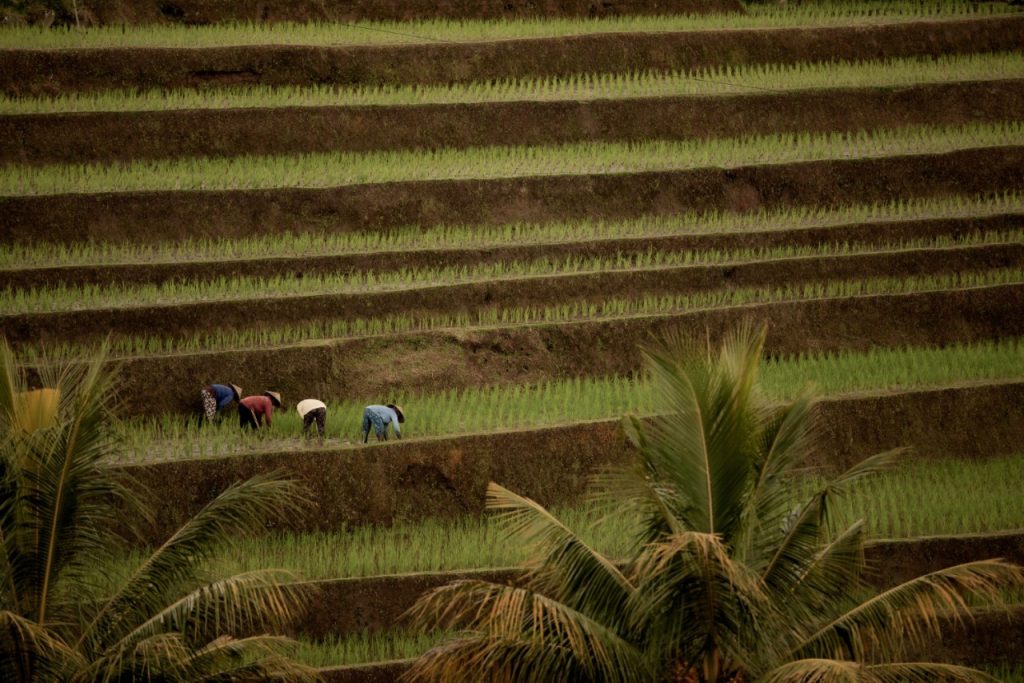
Below is a list of specific programs that provide support to the agricultural sector.
1. Department of Agriculture (DA) – Rice Farmers Financial Assistance (RFFA)
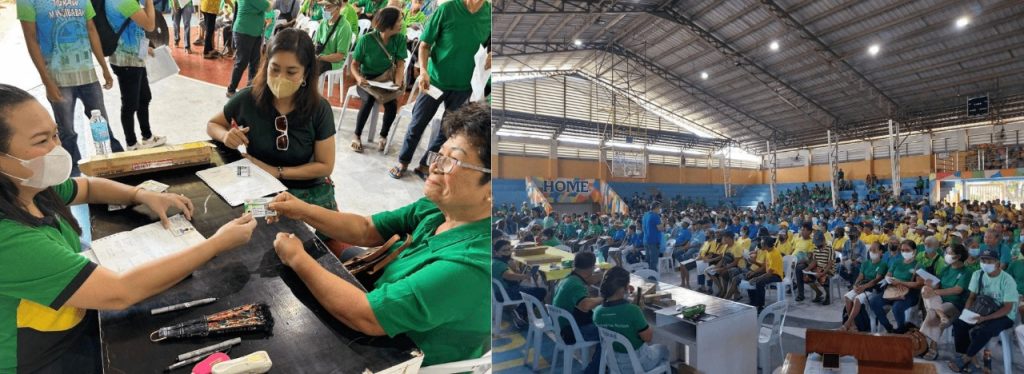
The RFFA offers a one-time cash assistance of Php 5,000 to rice farmers with farm sizes ranging from 0.5 to 2 hectares. Farmers must be registered with the Registry System for Basic Sectors in Agriculture (RSBSA) to qualify. This financial aid is provided through the Development Bank of the Philippines (DBP) and Land Bank of the Philippines (LandBank).
Purpose: To support smallholder rice farmers affected by declining palay prices and help them maintain productivity and profitability.
Benefits and services:
- Php 5,000 cash grant
- Assistance for farmers with 0.5 to 2 hectares of land
- Focus on farmers in 33 priority provinces
- Registration required in the RSBSA
- Helps cover income losses due to lower palay prices
2. Department of Agriculture – Rice Competitiveness Enhancement Fund (RCEF)

The RCEF was created under Republic Act No. 11203, known as the “Rice Tariffication Law,” to boost the competitiveness and income of rice farmers by enhancing their productivity through various support programs. It aims to assist farmers with machinery, seeds, credit, and training as the country transitions to a tariff-based rice trade system. The program has a PHP 10 billion annual budget for six years to support its initiatives.
Purpose: To improve the viability, efficiency, and global competitiveness of rice farmers in the Philippines while ensuring food security amid rice trade liberalization.
Benefits and services:
- Rice Farm Machinery and Equipment (50%): Provides access to postharvest and production machinery for farmers through cooperatives.
- Rice Seed Development, Propagation, and Promotion (30%): Distributes certified inbred seeds and supports local seed production.
- Expanded Rice Credit Assistance (10%): Offers low-interest loans with minimal collateral through Landbank and DBP.
- Rice Extension Services (10%): Provides training and skills development to enhance rice farming practices and income.
3. DA Agricultural Credit Policy Council (ACPC) – Survival and Recovery (SURE) Loan Program
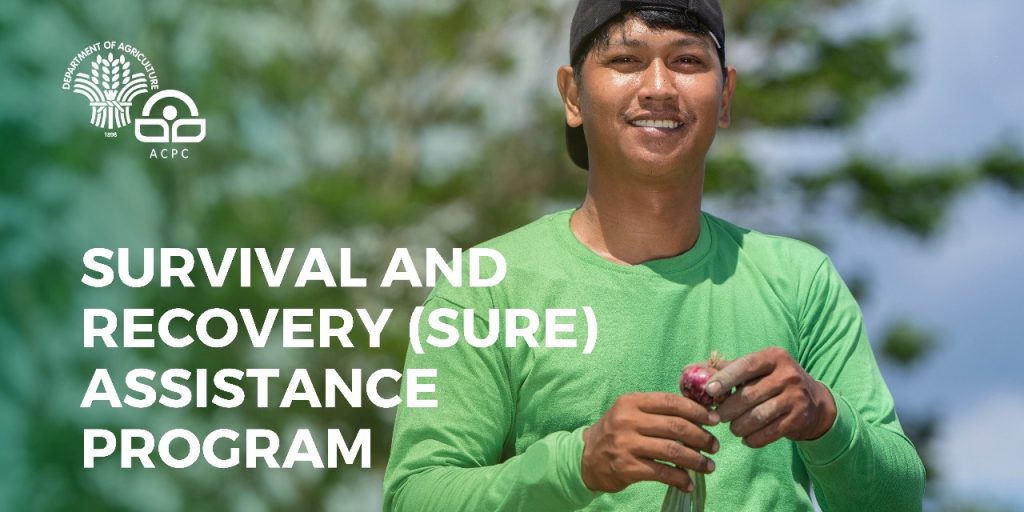
The SURE Loan Program offers small farmers and fishers a loan of up to ₱25,000 at 0% interest to help them recover from calamities or economic hardships, such as the Enhanced Community Quarantine. This initiative supports their livelihood rehabilitation and recovery. The loan is payable over three years and involves no collateral.
Purpose: The program aims to provide immediate financial relief to small farmers and fisherfolk in areas declared under a state of calamity, helping them recover their capacity to earn a living.
Benefits and services:
- Loanable amount up to ₱25,000
- 0% interest (3% service fee may apply)
- No collateral required
- Payable up to 3 years
- 1-year moratorium on existing loans under other ACPC programs
- Financing through Partner Lending Conduits (PLCs) like cooperatives and rural banks
- Eligibility determined by enrollment in the Registry System for Basic Sectors in Agriculture (RSBSA)
4. ACPC – Young Agripreneurs Loan Program (YALP)

The Young Agripreneurs Loan Program offers financial support to young Filipino farmers and fishers, helping them start or expand their farm or fishery businesses. It provides up to PhP500,000 with no collateral and zero interest, although a service fee of up to 3.5% may apply. The program also includes business advisory and technical assistance through various partner institutions.
Purpose: To encourage young Filipinos to engage in agriculture and fisheries by providing financial assistance, aiming to promote food security and sustainable livelihoods.
Benefits and services:
- Loan of up to PhP500,000 per borrower
- 0% interest (with possible service fee up to 3.5%)
- No collateral required
- Loan repayment based on project cash flow (max 5 years)
- Access to business advisory services (e.g., mentoring, entrepreneurship training)
- Available through Partner Lending Conduits (PLCs)
- Eligibility for entrepreneurs aged 18-30
5. ACPC – Agri-Negosyo Loan Program
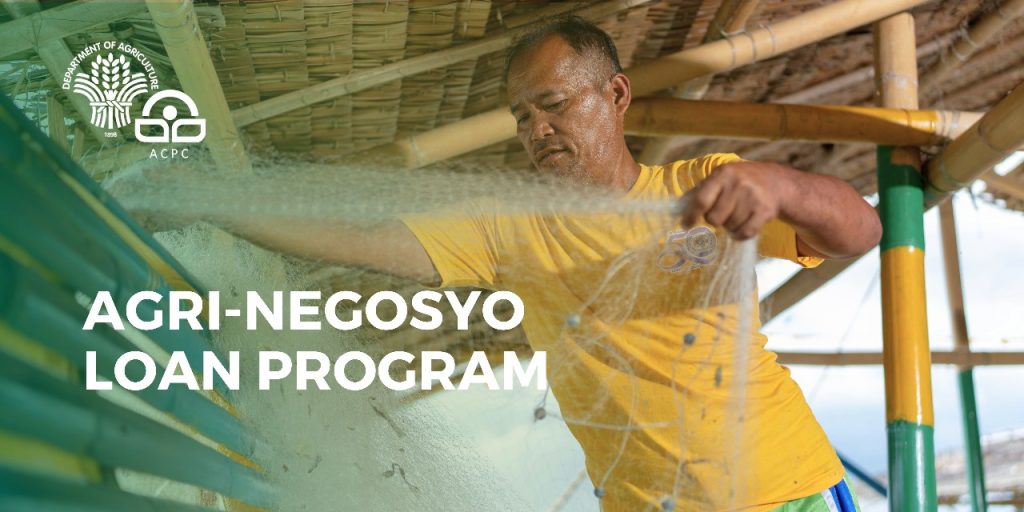
The Agri-Negosyo Loan Program provides loans to small farmers, fisherfolk, and their organizations or associations, as well as micro and small enterprises (MSEs) involved in agriculture or fishery. It aims to support production, processing, marketing, and distribution of agricultural and fishery products. Loan amounts vary, with low interest rates and flexible repayment terms based on the project’s cash flow.
Purpose: To finance capital requirements for agriculture and fishery projects of small farmers, fisherfolk, organizations, and MSEs.
Benefits and services:
- Loan amounts up to P300,000 for individuals, and up to P15 million for MSEs and organizations
- Interest rate of 2%, with service fees up to 3.5%
- Repayment terms of up to 5 years, depending on project cash flow
- Available for purposes like production, processing, distribution, machinery acquisition, and facility construction
- Loans facilitated through Partner Lending Conduits (PLCs) like cooperatives and rural banks
- Business planning workshops and program briefings for loan applicants
- Flexible application process with support from the Department of Agriculture and regional offices
6. DA and Landbank of the Philippines (LANDBANK) – Accessible Loans for Empowered, Resilient, and Transformed Agrarian Reform Beneficiary Organizations (ALERT ARBOs)
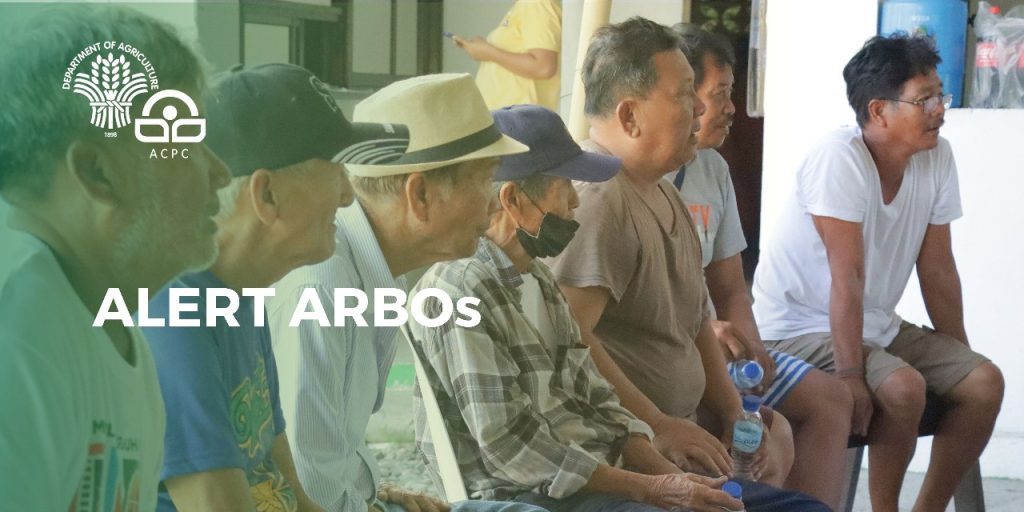
The ALERT ARBOs Program provides affordable loans to Agrarian Reform Beneficiary Organizations (ARBOs) and their members. It is designed to offer financial support, technical assistance, and marketing aid to strengthen ARBOs. Launched in 2020, it evolved from the Agrarian Production Credit Program to better support agrarian reform beneficiaries nationwide.
Purpose: To empower ARBOs by providing access to affordable loans and additional support services, enhancing their productivity and sustainability.
Benefits and services:
- Affordable loans at a fixed 5% annual interest rate
- Agricultural insurance
- Technical assistance and capacity building
- Marketing assistance
- Flexible loan terms and facilities (STLL, TL, STL)
- Eligible loan purposes include production, marketing, and acquisition of farm machinery
7. LANDBANK and DA – PAlay aLAY sa Magsasaka ng Lalawigan (PALAY ng Lalawigan) Lending Program
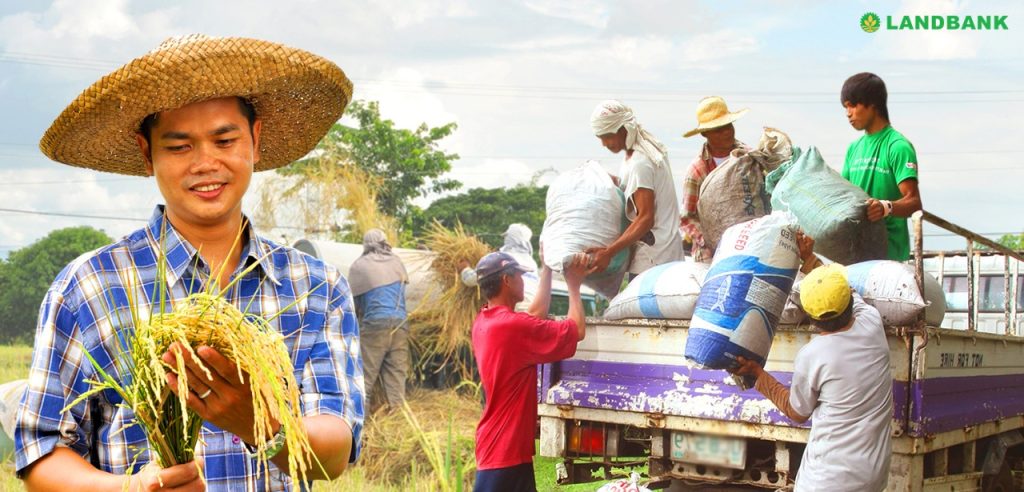
This program assists provincial, city, and municipal local government units (LGUs) in procuring palay from local farmers. The program also allows LGUs to acquire farm machinery and post-harvest facilities to support local agriculture. Through this initiative, LGUs can aid in stabilizing farm gate prices while promoting rice-related economic activities.
Purpose: To help rice-producing provinces by providing financial support for palay procurement, equipment acquisition, and rice-related ventures, mitigating the effects of low farm gate prices.
Benefits and services:
- Eligible Borrowers: Provincial LGUs of palay-producing areas
- Loan Purpose: Palay procurement, farm machinery acquisition, and rice-related projects
- Loanable Amount: Based on LGU’s Net Borrowing Capacity (NBC)
- Loan Terms: Up to 10 years depending on the project
- Interest Rates: 2% p.a. (short-term loans), 4.5% p.a. (long-term loans)
- Fees: Waived for handling, commitment, and pre-payment (unless refinanced by another bank)
- Collateral: Assignment of 20% Internal Revenue Allotment (IRA)
8. LANDBANK and the Department of Agrarian Reform (DAR) – Accessible Funds for Delivery to Agrarian Reform Beneficiaries (AFFORD-ARBs) Program

The AFFORD-ARBs Program is a collaborative initiative designed to provide loans to agrarian reform beneficiaries for agricultural production. This program focuses on financing essential crops such as rice, corn, and high-value vegetables, along with necessary farm implements. In 2019, the program successfully disbursed loans totaling P100.86 million to 523 farmer-borrowers and one cooperative.
Purpose: To support agrarian reform beneficiaries by enhancing their agricultural productivity through accessible financing options.
Benefits and services:
- Loans for rice, corn, and high-value crops
- Financing for farm implements
- Support for cooperative ventures
- Improved access to agricultural credit for farmers
9. LANDBANK – Agricultural Credit Support Project (ACSP)

The Agricultural Credit Support Project (ACSP) aims to reduce poverty by providing loan funds for agricultural investments, job creation, and enhanced productivity in rural areas. It supports agriculture and agri-related projects across various value chains. By partnering with multiple government departments, the ACSP delivers essential credit assistance to Agrarian Reform Beneficiaries (ARBs) for both on-farm and off-farm activities.
Purpose: To increase investments in agribusiness and support the financial needs of farmers and agricultural organizations.
Benefits and services:
- Loan Tenor:
- Short Term Loan: Up to 1 year
- Term Loans: More than 1 year, up to 7 years (including a 3-year grace period)
- Interest Rates:
- Short Term Loans: 8.5% per annum (with a 2% rebate for prompt payment)
- Term Loans: 9.5% per annum (with a 2% rebate for prompt payment)
- Loanable Amount:
- Crop Production: Up to 80% of total project cost
- Agri-enterprise and Livelihood Projects:
- Existing crop loan borrowers: Up to 10% of loan portfolio
- Non-borrowers: Up to P1,000,000 per borrower
- Eligible Borrowers:
- Agrarian Reform Beneficiaries Organizations (ARBOs)
- Farmers Organizations (FOs)
- Peoples Organizations (POs)
- Other conduits such as cooperatives, rural banks, and NGOs
- Eligible Projects:
- Crop production (both short and long gestating crops)
- Agri-enterprises
- Agri-related livelihood projects
- Pass-On Rates to Sub-Borrowers:
- Short-term Loans: 15% per annum
- Term Loans: 16% per annum
- Partner Roles:
- Department of Agriculture: Funds, technical, and marketing support
- Department of Agrarian Reform: Farm facilities and support services
- Department of Environment and Natural Resources: Additional support services
- LANDBANK: Credit provision, fund management, and loan administration
10. DA – Agricultural Competitiveness Enhancement Fund (ACEF)

The ACEF Lending Program provides essential credit to farmers, fisherfolk, and their cooperatives to boost productivity. It aims to establish an agricultural lending program that enhances the competitiveness of small farmers and fisherfolk. This program is designed to support micro and small enterprises in the agricultural sector.
Purpose: The program seeks to increase the productivity of eligible borrowers by providing access to necessary credit and promoting competitiveness within the agricultural sector.
Benefits and services:
- Eligible Borrowers:
- Individual farmers and fisherfolk
- Micro and small enterprises
- Farmers and fisherfolk cooperatives and associations
- Eligible Projects/Loan Purpose:
- Purchase of farm inputs and equipment
- Establishment of agri-based production and post-production facilities
- Maximum Loanable Amount:
- Up to 90% of the total project cost
- ₱1 Million for individual farmers/fisherfolk
- ₱5 Million for cooperatives, associations, and micro and small enterprises
- Interest Rate:
- 2% per annum
- Collateral Options:
- Production and expected produce
- Chattel mortgage on financed assets
- Assignment of insurance proceeds and expected produce
11. DA – Sikat Saka Program
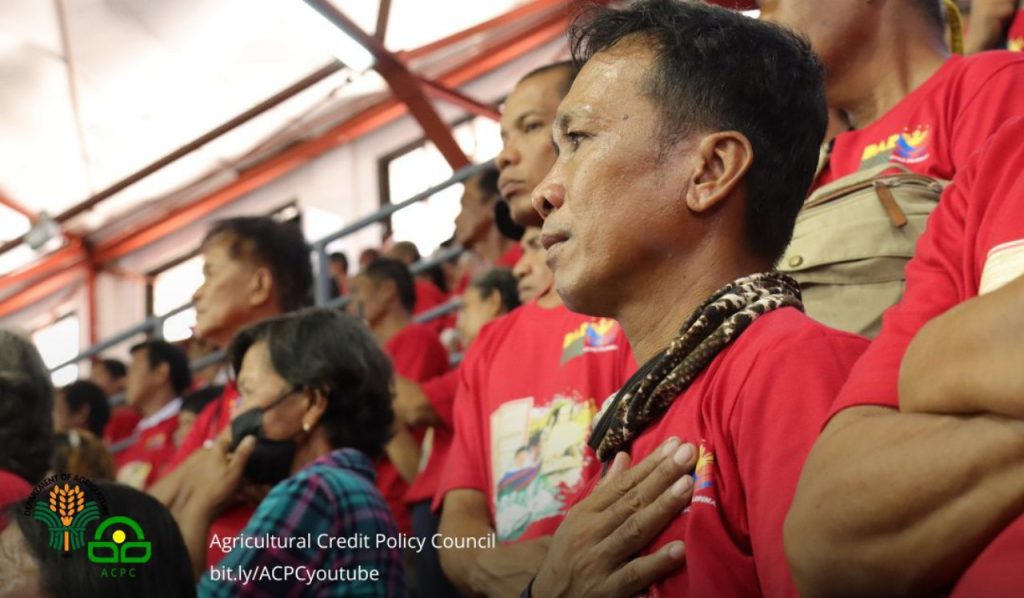
The Sikat Saka Program I and II provides direct credit access from LANDBANK, along with comprehensive support from the Department of Agriculture, aimed at enhancing the financial viability of small palay and corn farmers. This initiative seeks to improve creditworthiness and strengthen crop production. By collaborating with various agencies, the program creates a robust support system for eligible farmers.
Purpose: The primary goal is to empower small farmers by improving their access to credit and providing necessary agricultural support to ensure sustainable crop production.
Benefits and services:
- Direct credit access from LANDBANK
- Market support from the National Food Authority (NFA)
- Guidance and mobilization from the National Irrigation Administration (NIA) for Irrigators Associations (IAs)
- Training and extension services from the Agricultural Training Institute (ATI) on financial management
- Insurance coverage for loans through the Philippine Crop Insurance Corporation
- Incentives for Irrigators Associations that assist farmers with timely loan repayments
- Requirement for farmers to open LANDBANK DA Sikat Saka ATM accounts
Video: How to Enjoy the DA RFFA?
If you are a farmer and you are interested in the perks associated with the DA RFFA, then watch this video from Agriculturist. This video offers an overview of the RFFA program, detailing its purpose and eligibility requirements for farmers and explains how the program aims to support smallholder rice farmers facing income losses due to declining palay prices by offering a one-time cash grant. It also covers the program application process, including necessary registrations and documentation needed to qualify for the assistance. The video emphasizes the importance of this support in helping farmers maintain their productivity and livelihoods in challenging economic conditions.
Summary
There are various loan and financial assistance programs for rice farmers, and all of them are designed to enhance agricultural productivity and ensure food security. By providing essential financial resources and support, these programs help farmers to manage challenges, invest in their operations, and sustain their livelihoods. To learn more about these programs and how they can benefit you or someone you know in the agricultural sector, explore the list above. Your support can certainly help strengthen our agricultural community and contribute to a more resilient food system in the Philippines.
